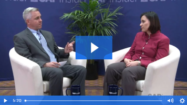SAP GRC
Filter By
Browse By
- SAP Analytics and AI
- SAP Application Development and Integration
- All SAP Application Development and Integration
- SAP ABAP
- SAP ABAP Development Tools
- SAP ABAP Test Cockpit
- SAP API Management
- SAP BAPI
- SAP Basis
- SAP BRF
- SAP Business Application Studio
- SAP CMS
- SAP Design Studio
- SAP Development Tools
- SAP DevOps
- SAP EAI
- SAP EDI
- SAP Extension Suite
- SAP Fiori
- SAP Fiori Elements
- SAP Integration Suite
- SAP Low Code Application Development
- SAP Low Code Automation
- SAP Netweaver
- SAP Release Management
- SAP UI5
- SAP Web Application Server
- SAP Web IDE
- SAP Business Process Management
- SAP Center of Excellence
- SAP CIO
- SAP Customer Experience
- SAP Data and Data Management
- All SAP Data and Data Management
- SAP BW
- SAP BW/4HANA
- SAP Crystal Reports
- SAP Data Archiving
- SAP Data Center
- SAP Data Governance
- SAP Data Integration
- SAP Data Migration
- SAP Data Quality
- SAP Data Services
- SAP Data Strategy
- SAP Data Visualization
- SAP Data Warehouse Cloud
- SAP DMS
- SAP Document Control
- SAP EIM
- SAP ETL
- SAP ETL Tools
- SAP HANA
- SAP HANA Administration
- SAP HANA Deployment Infrastructure
- SAP HANA Studio
- SAP Master Data
- SAP Master Data Governance
- SAP MDM
- SAP Enterprise Architect
- SAP Enterprise Asset Management
- SAP ERP
- SAP Finance
- All SAP Finance
- SAP Accounting
- SAP AR AP
- SAP Asset Accounting
- SAP Billing Systems
- SAP BPC
- SAP BRIM
- SAP Cash Management
- SAP Central Finance
- SAP Controlling
- SAP COPA
- SAP Cost Center Accounting
- SAP Currency Risk
- SAP e-invoicing
- SAP FICO
- SAP Finance Automation
- SAP Advanced Financial Closing
- SAP Financial Consolidation
- SAP Financial Planning
- SAP FX Risk
- SAP General Ledger
- SAP Global Tax Management
- SAP Hyperion
- SAP Order to Cash
- SAP Payment Processing
- SAP Profitability Analysis
- SAP Rebate Management
- SAP S/4HANA Finance
- SAP SWIFT Compliance
- SAP Treasury Management
- SAP Universal Journal
- SAP Governance Risk and Compliance
- SAP Human Capital Management
- SAP Intelligent Technologies
- SAP Platform and Technology
- All SAP Platform and Technology
- SAP Business Technology Platform
- SAP Cloud
- SAP Cloud Connector
- SAP Cloud Integration Platform
- SAP Cloud Migration
- SAP Cloud Platform
- SAP Cloud Providers
- SAP Cloud Strategy
- SAP Digital Signature
- SAP Container Platform
- SAP HANA Enterprise Cloud
- SAP Digital Asset Management
- SAP Smart Forms
- SAP HEC
- SAP Digital Integration Hub
- SAP Hyperscalers
- SAP Infrastructure
- SAP Messaging
- SAP Quality and Testing
- SAP Security
- SAP Spend Management
- SAP Supply Chain Management
- All SAP Supply Chain Management
- SAP APO
- SAP Asset Management
- SAP Business Network
- SAP Digital Manufacturing Cloud
- SAP Digital Twin
- SAP EWM
- SAP IBP
- SAP Inventory Management
- SAP Label Printing
- SAP Logistics
- SAP Manufacturing
- SAP Manufacturing Automation
- SAP MES
- SAP MII
- SAP MM
- SAP MRO
- SAP MRP
- SAP Order Management
- SAP Plant Maintenance
- SAP PLM
- SAP Production Planning
- SAP S&OP
- SAP SD
- SAP SPM
- SAP Supply Chain Planning
- SAP Track and Trace
- SAP Transportation Management
- SAP System Administration
What is SAP GRC?
Governance, risk, and compliance (GRC) is a vital set of functions for enterprises to maintain secure and audit-friendly environments while being more confident in their actions. For SAP customers, SAP GRC can mean a set of GRC products provided by SAP itself or the GRC activities and technologies related to SAP systems.
What is SAP GRC?
Governance, risk, and compliance (GRC) is a vital set of functions for enterprises to maintain secure and audit-friendly environments while being more confident in their actions. For SAP customers, SAP GRC can mean a set of GRC products provided by SAP itself or the GRC activities and technologies related to SAP systems.
GRC is growing in importance with rapidly changing regulations that create new compliance challenges. Security and financial risks are also on the rise as companies adopt more cloud technologies, enact bring-your-own-device policies, and enable remote workers in greater numbers.
SAP GRC tools are available to help with areas of risk management, process control, financial compliance, threat detection, identity management, privacy governance, and more. SAP partners and other vendors that provide GRC solutions and consulting services include Appsian Security, Fastpath, and Soterion.
Key Considerations for SAPinsiders:
- Take inventory of your GRC processes and automate wherever possible. In our most recent GRC State of the Market research, successful GRC organizations are focused on automation to streamline processes. To do this, processes being automated need to be repeatable and effective. Before investing in GRC automation technology, it’s best to get processes in line. Many companies are automating the process of keeping track of who makes changes to the SAP systems.
- Digital transformation offers the opportunity to rethink GRC processes. If your company is implementing new software such as SAP S/4HANA, it’s smart to use that project as a catalyst to examine key GRC processes and find out how they can be improved. For example, HP set up a new GRC system during its SAP S/4HANA migration, including rethinking its user access processes and segregation of duties (SoD) ruleset. In the past HP relied on a homegrown tool for access control but implemented SAP Access Control and SAP Process Control as a component of its SAP S/4HANA migration.
- Determine the present and future state of remote work at your company, and how that impacts risk and security. Many companies have gone more remote in the past two years. For GRC groups, this provides more challenges for user access and opens companies up to more cyber threats. Map out your remote working landscape and determine what processes and tools you have in place to reduce risk.
83 results
-

GRC in the Digital Age
Reading time: 2 mins
Implementing strong governance, risk, and compliance (GRC) practices doesn’t involve one solution, one policy, or one team: It involves a collection of solutions, policies, and teams that work together to address the many concerns that make up GRC. As businesses change in the wake of disruptive technologies, each of the three prongs of GRC faces…
-

Keeping Up with the GRC Demands of the Digital Age
Reading time: 4 mins
Today’s organizations look dramatically different than they did just a few years ago. Modern digital enterprises have an increasing cloud presence, a growing mobile footprint, and data that lives outside an organization’s walls. These characteristics are not only reshaping how businesses operate, they are reshaping how businesses secure themselves. With borderless networks and an abundance…
-

The Need for Real-Time Insights and Alignment for True Governance and Compliance
Reading time: 2 mins
Auditing and risk management are essential for ensuring that your organization is meeting standards properly and following processes. But as IT landscapes grow bigger and new technologies introduce new vulnerabilities, the governance, risk, and compliance (GRC) landscape has become increasingly complicated and difficult to manage. Discover how automation and modern GRC solutions for SAP environments…
-
-

- SAP GRC
 Premium
Premium
How to Prepare Your SAP System for the New European Union General Data Protection Regulation
Reading time: 10 mins
Learn how to change your practices within your SAP environment so that they comply with the new data General Data Protection Regulation (GDPR) privacy regulation. Key Concept The new European Union General Data Protection Regulation (GDPR) will become effective on May 25, 2018. Companies using European personal data, both inside and outside of Europe, are...…
-

Live from SAPinsider Studio: San Diego Gas & Electric on Mitigating SoD Conflicts
Paul Malin, Financial Systems Client Support Manager at San Diego Gas & Electric, joins SAPinsider Studio at the SAP GRC 2016 event to discuss San Diego Gas & Electric’s journey to upgrade its GRC system. Ken Murphy, SAPinsider: Hi, this is Ken Murphy with SAPinsider. I’m at the SAPinsider GRC event 2016, in Las Vegas,...…
-

Live from SAPinsider Studio: Beam Suntory’s SAP Role Redesign
Ivanka Gajecky, Manager of Application Security, Beam Suntory, joined SAPinsider Studio at the SAPinsider GRC 2016 event to discuss Beam Suntory’s SAP security role redesign project that was undertaken to align with the business becoming more centralized. This is an edited transcript of the discussion: Ken Murphy, SAPinsider: Hi, this is Ken Murphy with SAPinsider....…
-

Live from SAPinsider: Stanley, Black & Decker’s GRC Journey
Rebecca Hodge of Stanley, Black & Decker joins Steve Biskie of High Water Advisors at the SAPinsider GRC 2016 event to discuss her company’s GRC journey with SAP Access Control. This is an edited transcript of the discussion: Steve Biskie, High Water Advisors: Hi, I’m Steve Biskie, Managing Director of High Water Advisors, here with...…
-
-

Gain Control and Mitigate Risk
Reading time: 5 mins
It’s no secret that cybercriminals are growing stronger. As technologies advance and people grow more interconnected, hackers have more opportunities to exploit those connections and compromise a business. Given all the dangers that are present, it’s essential that organizations implement a consistent security framework across an entire organization. This article explores SAP’s three lines of…
-

Integrated Security Solutions to Mitigate Risks on All Fronts
Reading time: 5 mins
The new digital economy brings an unprecedented flow of data into the enterprise, which in turn leads to an unprecedented governance, risk, and compliance (GRC) challenge. As organizations struggle to sort through this data, cybercriminals are working just as hard to steal it. In order to stay secure, businesses need integrated GRC solutions that not…
-

An Integrated Approach to Identifying Security Risks
Reading time: 12 mins
As technology becomes more sophisticated, so do the cyberattacks that aim to steal and even manipulate data. In response to this new rise in cybercrime, SAP released SAP Enterprise Threat Detection, a native SAP HANA application that quickly identifies suspicious patterns in log data and generates alerts to notify the appropriate personnel to take action.…
Become a Member
Unlimited access to thousands of resources for SAP-specific expertise that can only be found here.
Become a Partner
Access exclusive SAP insights, expert marketing strategies, and high-value services including research reports, webinars, and buyers' guides, all designed to boost your campaign ROI by up to 50% within the SAP ecosystem.
Upcoming Events
Related Vendors
Your request has been successfully sent


